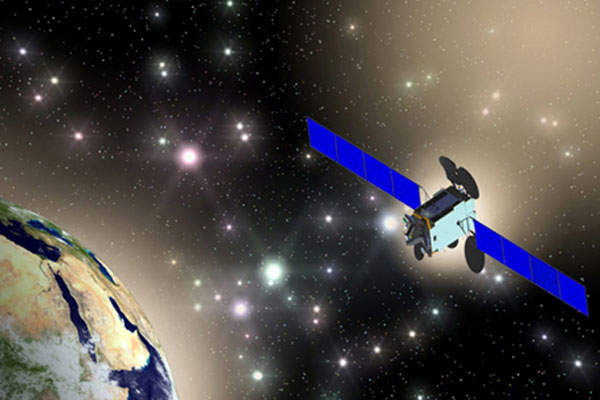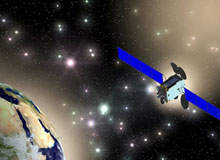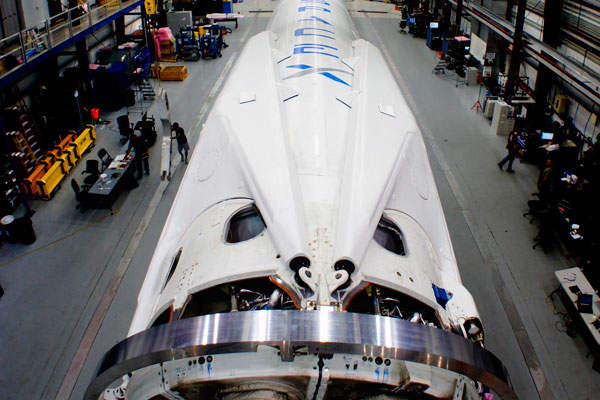Es’hail-2 communication satellite was launched into the geostationary transfer orbit in November 2018. It is the first Amateur Radio communication satellite in Qatar.
The satellite was launched onboard the Falcon-9 launch vehicle from Kennedy Space Centre, Florida, US. It is positioned at a 26° east orbital position and provides TV broadcasting and direct-to-home (DTH) services across the Middle East and North Africa.
Owned and operated by Es’hailSat, Es’hail-2 is Qatar’s second communications satellite, following the launch of the Es’hail-1 in August 2013.
Es’hailSat plans for more new satellites in prime hotspot locations.
Es’hail-2 satellite development details
Es’hailSat awarded the design and build contract of the satellite to Japan-based manufacturer Mitsubishi Electric (MELCO) in September 2014. The critical design review of the satellite was completed in 2015.
MELCO also supplied the ground systems and provided the required training under a complete turnkey solution. This made Mitsubishi the first Japanese satellite supplier to enter Arab’s commercial communications satellite market.
Es’hail-2 has a mass of approximately 3,000kg and a lifespan of more than 15 years.
Communication capabilities of the Es’hail-2
The satellite features 24 Ku-band and 11 Ka-band transponders to provide direct broadcasting services for television, government and commercial content distribution.
In addition, it carries two phase four Amateur Radio transponders, which provide Radio Amateur Satellite Corporation the first geostationary communication capability to directly link Brazil to India in a single hop in real-time. It also allows the AMSAT community to corroborate and exhibit their digital video broadcasting standard.
Satellite bus
Es’hail-2 is based on the DS2000 satellite bus platform developed by MELCO. The satellite bus handles a broad range of communications payloads and can provide an output of up to 15kW, which is sufficient to power multiple payloads.
Its flexible design suits various payload applications, including hybrid communication payloads, multiple spot-beam broadband communications and meteorological satellites.
The electrical power system includes a 100V-regulated dual bus with silicon, multi-junction Gallium arsenide solar array, and NiH2 or Li-Ion batteries.
Launch vehicle
Es’hailSat selected Space Exploration Technologies in December 2014 to launch the satellite. SpaceX launches the satellite onboard its own launch vehicle called Falcon 9 from SpaceX’s launch complex 40 at Cape Canaveral Air Force Station.
Falcon 9 is a 505,846kg, 68.4m-tall two-stage rocket. It can carry a payload of 13,150kg to LEO, and 4,850kg to GTO.
Its first stage features nine Merlin engines and aluminium-lithium alloy tanks carrying liquid oxygen and rocket-grade kerosene (RP-1). It generates 1.3Mlb (million pounds) of thrust at sea level and 1.5Mlb in the vacuum of space.
The second stage incorporates a single Merlin vacuum engine that delivers the payload to the respective orbit. The engine can be restarted multiple times to place different payloads into different orbits.
This stage generates a thrust of 180,000lbf and an intermediate stage between the first and the second holds the release and separation system.
Teleport facility for satellite ground station services
Es’hailSat awarded a contract to SES TechCom, a wholly owned subsidiary of SES, to develop a new teleport facility for the satellite in October 2014. The new state-of-the-art facility will be constructed on a greenfield site located to the north of Doha.
Es’hailSat awarded a contract to SES TechCom, a wholly-owned subsidiary of SES, to develop a new teleport facility for the satellite in October 2014. The state-of-the-art facility is constructed on a greenfield site located to the north of Doha.
It provides satellite control and communications support for Es’hail-2, as well as up-linking and reception facilities for the company’s business partners.
The teleport features the necessary equipment to provide a comprehensive satellite ground station and platform services. SES TechCom worked closely with Es’hailSat to create the facility, which is expected to play a key role in Qatar’s communication infrastructure.





